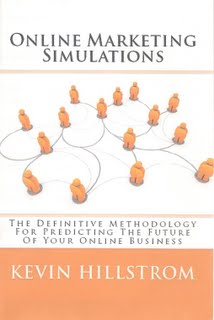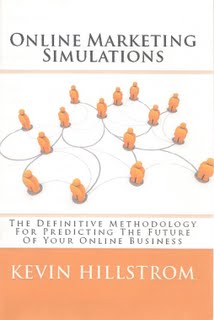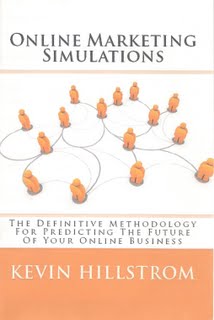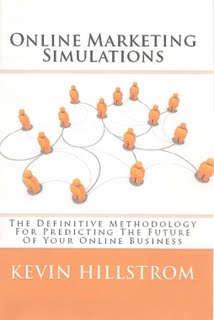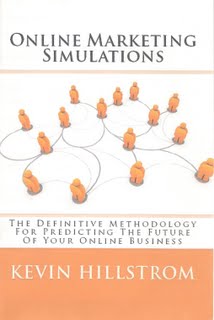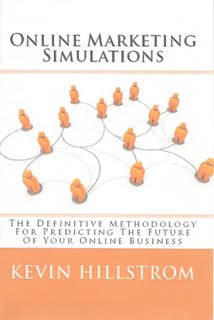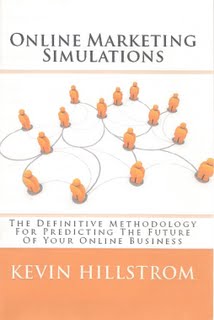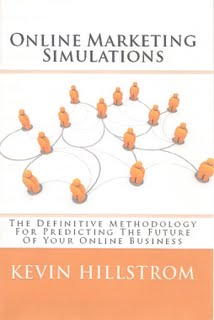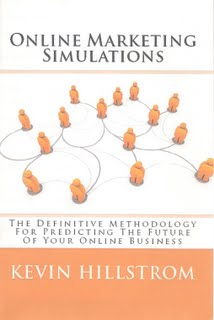 Time to open up your Online Marketing Simulation worksheets (click here to have me send you a copy, buy the book here).In the spreadsheet, enter "0" in cells B101 - B188, and enter "0" in cells B190 - B580. This means that we are going to analyze just one segment of customers, a segment that is at a grade of "B" on an "A / B / C / D / F". Recall that I grade all customers in Online Marketing Simulations, so that I can measure where these customers migrate over time.Ok, 7,062 customers with a grade of "B" don't stay as "B" customers for long, do they? At the end of five years, the majority of customers slump to grades of "D" and "F". In other words, good customers don't stay good customers forever. Here's what we see in our simulation:
Time to open up your Online Marketing Simulation worksheets (click here to have me send you a copy, buy the book here).In the spreadsheet, enter "0" in cells B101 - B188, and enter "0" in cells B190 - B580. This means that we are going to analyze just one segment of customers, a segment that is at a grade of "B" on an "A / B / C / D / F". Recall that I grade all customers in Online Marketing Simulations, so that I can measure where these customers migrate over time.Ok, 7,062 customers with a grade of "B" don't stay as "B" customers for long, do they? At the end of five years, the majority of customers slump to grades of "D" and "F". In other words, good customers don't stay good customers forever. Here's what we see in our simulation:- Grade of A = 436.
- Grade of B = 503.
- Grade of C = 695.
- Grade of D = 1,202.
- Grade of F = 4,226.
Now, marketers think they can "fix" this problem. By initiating a loyalty program, or by simply dazzling the customer with outstanding marketing programs, we're told that marketers and vendors can "retain" your best customers.So, let's assume that you can do a better job of retaining these customers. In cells C5 - G5, enter the value "1.30". This means that we're going to do a 30% better job of retaining customers, due to a loyalty program that does a spectacular job of retaining customers. What does the distribution of customers look like after five years?- Grade of A = 1,047.
- Grade of B = 742.
- Grade of C = 756.
- Grade of D = 1,110.
- Grade of F = 3,406.
If you can develop a loyalty program that somehow increases retention rates by 30% per year for each of five years, you can make a difference.
Good luck with that!
It is more common that new marketing efforts, as long as existing programs are being executed reasonably well, will lift retention rates by maybe 5%. So plug the value "1.05" into cells C5 - G5. Now take a look at how customers migrate over time:
- Grade of A = 510.
- Grade of B = 543.
- Grade of C = 717.
- Grade of D = 1,199.
- Grade of F = 4,093.
Look at that! You improve retention rates by 5% a year, every year, and you basically get nowhere, do you? A 30% increase by year, every year, makes a significant difference, but is virtually impossible to achieve.
So, if you want to add an additional 500 customers at a Grade of "A", how are you going to do it? Your thoughts?
Labels: OMS, Online Marketing Simulations
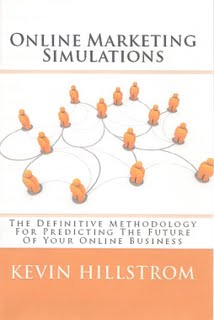 Open your spreadsheet (contact me for your copy), and take a look at cells J19 - N19.
Open your spreadsheet (contact me for your copy), and take a look at cells J19 - N19.
